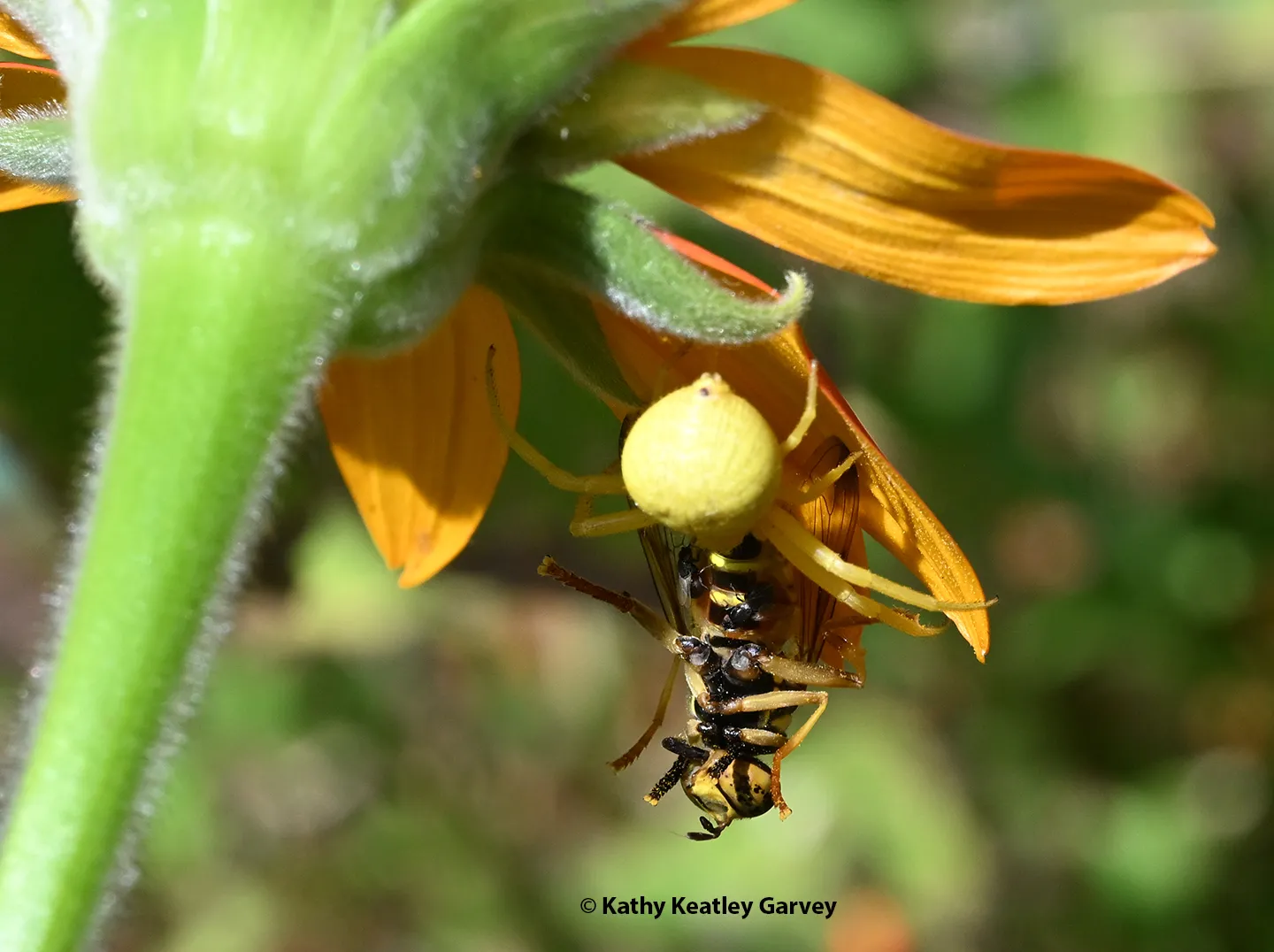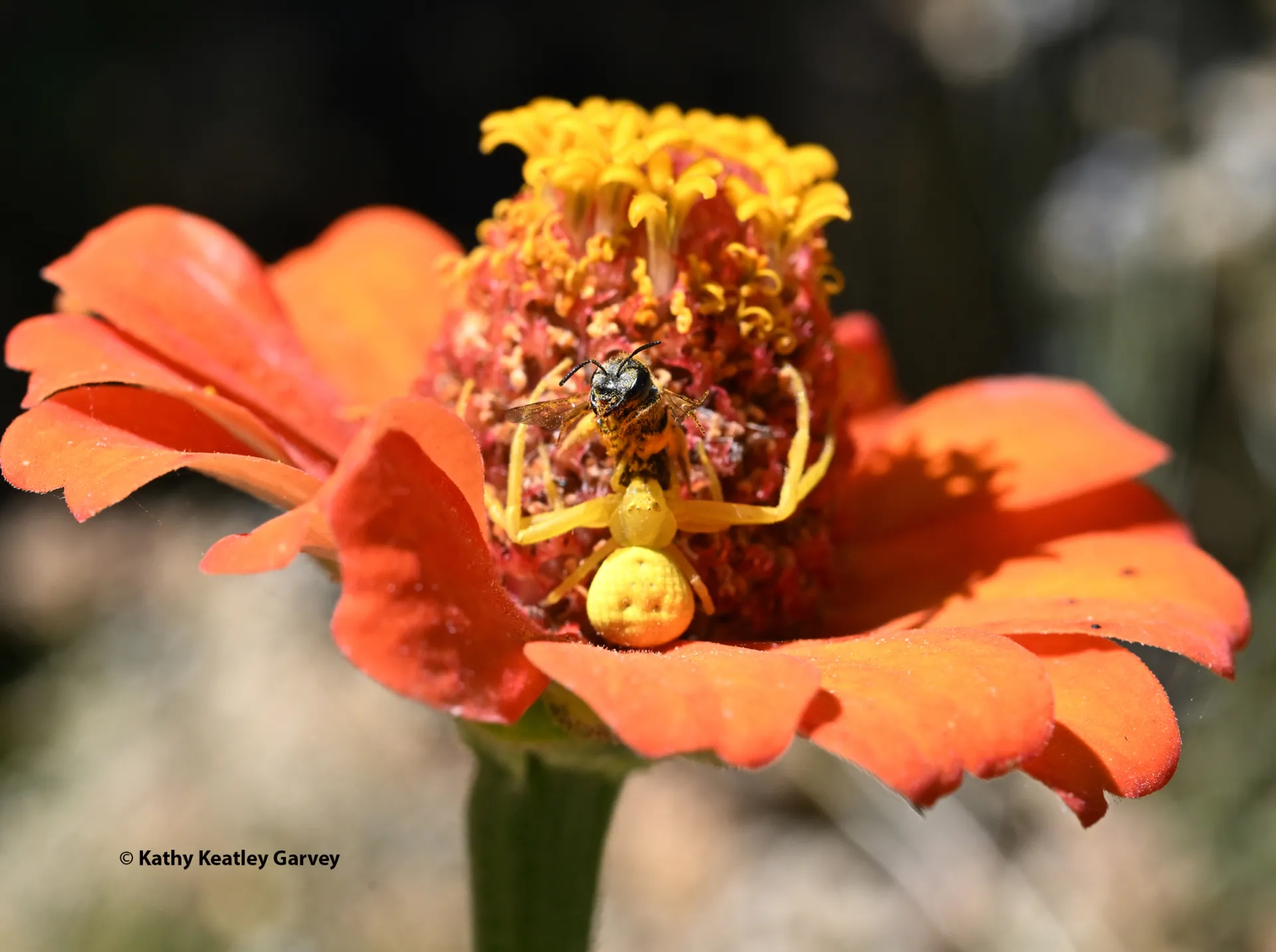
If you look like a yellowjacket but you’re really a fly, that doesn’t mean a predator can’t grab you and eat you.
Take the case of a crab spider lying in wait on a Mexican sunflower, Tithonia rotundifola, in a Vacaville garden.

Our very alert spider knows exactly where to practice its ambushing skills. Honey bees, longhorned bees, hover flies (aka flower flies) and butterflies visit the flowers every day.
This morning it grabbed an insect that resembled, at first glance, a yellowjacket or European paper wasp. UC Davis Distinguished Professor Emerita Lynn Kimsey, who directed the Bohart Museum of Entomology for 34 years, quickly identified it as a yellowjacket-mimic hover fly.
Hover flies and yellowjackets exhibit key differences in appearance and behavior.
If you look closely at the image, you can see the fly's stubby antennae and one set of wings. Yellowjackets have long antennae, two sets of wings, and a stinger.
Unlike bees and wasps, hover flies (family Syrphidae) hover over flowers before touching down. They are no threat. They mimic yellowjackets to deter predators.
The most renowned hover fly that mimics a yellowjacket is Milesia virginiensis, known generally as the "yellowjacket hover fly" or "Virginia flower fly." It's found in the United States, Canada and Mexico.
Sometimes it's found on the menu of a crab spider.


